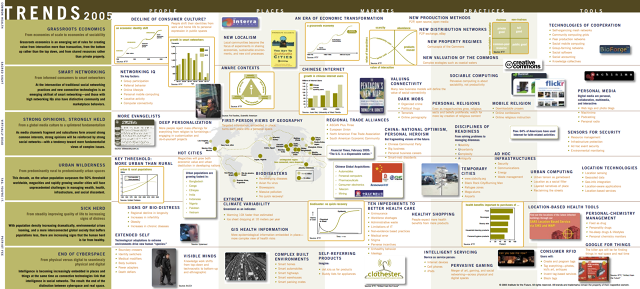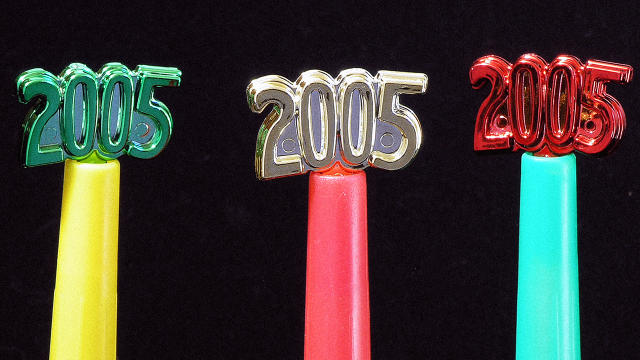Predictions About The Last Decade, From Futurists In 2005
To find out how wrong we are about what it will look like in 10 years, let's look back at how wrong we were 10 years ago.
Since 1968, the Institute for the Future, located in tech-centric Palo Alto, California, for most of its existence, has made a business of helping organizations prepare for the future. Every year, the institute offers up a 10-year forecast—its look at how the world could change over the next decade.
We tend to cover IFTF's work with an eye towards the future, but it's also worthwhile to look at whether they've been correct in the past. So what did IFTF forecast for the past decade? Here's a birds-eye view of the emerging trends in 2005 that, at the time, the institute thought would grow even larger (click to zoom).

In an 86-page written report, IFTF expanded on its forecasts. Some of them are surprisingly accurate. The report predicts the rise of urban computing, for example, in which people use mobile tech to hone-in on pollution and crime in cities. We've seen this kind of technology emerge with everything from apps that allow users to alert the community and local government about potholes to mobile air pollution sensors that upload data into crowdsourced apps.
The report also warns of the dire effects of climate change, which have only emerged in bits and pieces so far. The 2005 predictions are largely the same as we would see in a report from 2015: more flooding, heat waves, drought, soil erosion, and so on. The report predicts these outcomes on a timeline that goes beyond 2015. IFTF doesn't spend nearly as much time discussing climate change in the report compared to other topics, like religion and online communities. But remember: An Inconvenient Truth, the film that brought climate change to mainstream consciousness, didn't come out until 2006. We are, of course, no closer to ameliorating climate change's potential impacts than we were in 2005.

IFTF correctly predicts a rise in what it calls "collective intelligence" tools, like social networks (called "social software" here), "web logs," and photo blogs. A concurrent rise in social bookmarking services (the example in the report is Delicious, which is now struggling) hasn't happened. Instead, we tend to turn to social networks for recommendations on interesting websites and stories.
The institute's technology timeline of the decade is more than a little ambitious. Some of the near-term predictions, like ubiquitous cell phones, smart phones, "wearable data" (what we'd now think of as wearable tech, like fitness trackers), sharing economies, and the rise of DIY radio, TV, and podcasting, have been pretty accurate.
But many of the predictions from 2009 on are still in early phases of development, including human exoskeletons for extreme environments (or disability), smart roads and highways, holographic displays, and embedded brain chips. Fortunately, none of the timeline's wild card disasters, like an Internet hobbled by restrictions and a biodisaster that kills a million people, have come to pass (though net neutrality rules are still up in the air).
Some things are just unforeseeable. The report considers the completely reasonable idea that a flu pandemic could kill millions, but refers to Ebola (based on the last scare in the 1990s) as "initially quite frightening" but then dying out "relatively quickly without actually killing large numbers of people."
Check out the full report here.
[Top photo: Stephen Chernin/Getty Images]

Aucun commentaire:
Enregistrer un commentaire